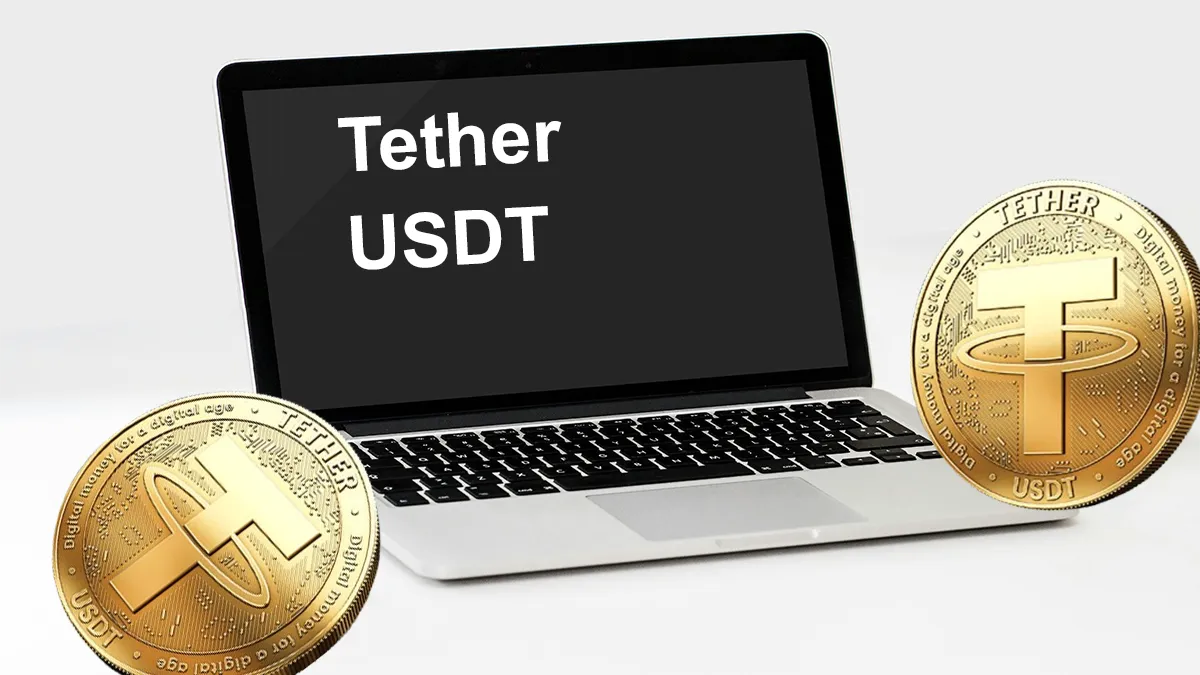Tether: Navigating the Crossroads of Cryptocurrency, Crime, and Capital

In recent years, Tether (USDT) has emerged as a dominant player in the cryptocurrency landscape. As the world’s most traded stablecoin, it is often the go-to choice for traders seeking liquidity and stability in an otherwise volatile market. However, Tether’s ascent is not without controversy. Increasingly, it has become synonymous with illicit activities, attracting scrutiny from law enforcement agencies across the globe. Compounding these challenges, Tether has recently secured significant backing from Wall Street titan Cantor Fitzgerald and its CEO, Howard Lutnick. This situation raises important questions about potential conflicts of interest and the implications for the broader financial ecosystem.
The Rise of Tether
Tether (USDT) was introduced to provide a bridge between fiat currencies and cryptocurrencies by pegging its value to traditional currencies like the U.S. dollar. This mechanism allows traders to move funds seamlessly within the crypto market while minimizing exposure to volatility. Given its widespread use, Tether has evolved into a critical component of many trading strategies and platforms.
However, this rapid growth has attracted attention beyond that of investors and traders. Law enforcement agencies in the U.S. and EU have noted that Tether’s anonymity features make it appealing to international criminals seeking to facilitate cross-border transactions without detection. The accessibility and efficiency of Tether transactions can obscure financial trails, making it a tool for money laundering and other illicit activities.
Scrutiny from Law Enforcement
As concerns about financial crime continue to mount, regulatory bodies are increasingly examining Tether’s operations. In 2021, both U.S. regulators and European authorities began to investigate the stablecoin’s role in facilitating illegal activities. The scrutiny revolves around questions of transparency regarding Tether’s reserves—specifically whether it truly maintains a one-to-one peg with fiat currency.
The ongoing investigations have led to debates about how best to regulate cryptocurrencies like Tether without stifling innovation. Striking a balance between consumer protection and fostering technological advancement is no small task for policymakers as they navigate this uncharted territory.
Wall Street’s Involvement: A Double-Edged Sword
The recent investment by Cantor Fitzgerald represents a significant endorsement of Tether’s potential within traditional finance circles. Howard Lutnick’s ties to high-profile political figures raise additional questions about potential conflicts of interest that could arise as Wall Street further integrates with cryptocurrency markets.
Lutnick’s background as a seasoned financier suggests that he recognizes the transformative potential of cryptocurrencies—and specifically stablecoins like Tether—in reshaping global finance. However, his connections could also lead to perceptions of favoritism or regulatory leniency that might undermine public trust in both traditional financial institutions and cryptocurrencies alike.
The Future of Tether: Opportunities and Challenges
Moving forward, Tether faces both opportunities for growth and considerable challenges related to regulation and public perception. On one hand, increased institutional investment could lend credibility to the cryptocurrency market overall; on the other hand, persistent concerns about its association with criminal activity may hinder wider adoption among mainstream investors.
The key will be how effectively Tether’s management addresses regulatory concerns while maintaining its competitive edge in providing liquidity solutions for traders globally. Transparency regarding reserves and operational practices will be crucial in gaining back public trust—and ensuring compliance with emerging regulations.
What Is Tether and How Does It Work?
Tether founded in 2014 by Giancarlo Devasini, an Italian former plastic surgeon with a background in crypto exchange development, and Brock Pierce, a prominent American entrepreneur with deep roots in the blockchain space, Tether was created to address the volatility often associated with cryptocurrencies.
At its core, Tether (USDT) is a stablecoin—a type of cryptocurrency designed to maintain a stable value by pegging it to a reserve of real-world assets. In the case of Tether, its value is tied to the U.S. dollar on a 1:1 basis. This means that for every USDT issued, there should ideally be one U.S. dollar or equivalent assets held in reserve. The reserves can include a mixture of U.S. Treasury bills, gold, Bitcoin, and other financial instruments that provide liquidity and stability.
The concept of stablecoins like Tether is particularly appealing to investors and traders who seek to mitigate the risks associated with price fluctuations common in many cryptocurrencies such as Bitcoin or Ethereum. By offering a reliable means of value exchange that is not subject to extreme volatility, Tether facilitates smoother transactions and serves as a safe haven during turbulent market conditions.
The Mechanics Behind Tether
Tether’s operational framework is designed to ensure transparency and security. The company asserts that it maintains adequate reserves to back every USDT in circulation. Regular audits have been proposed over time to verify these claims; however, scrutiny regarding the exact composition of Tether’s reserves has been an ongoing concern within the cryptocurrency community.
When users want to acquire USDT, they can do so through various exchanges or directly from Tether itself by depositing fiat currency (like USD). Once issued, USDT can be traded on multiple exchanges or used for transactions within different crypto ecosystems. This versatility contributes significantly to its widespread adoption.
Moreover, since Tether operates on several blockchain platforms—including Ethereum, Tron, and others—it provides users with flexibility in how they engage with decentralized applications (dApps) and participate in various crypto markets.
The Rise of Tether: Market Capitalization and Influence
Over the years, Tether has become synonymous with cryptocurrency trading. As of January 2025, its market capitalization soared to an impressive $138 billion—an exponential increase from just a few billion dollars in 2019. This meteoric rise underscores not only the growing acceptance of stablecoins but also highlights how essential Tether has become for liquidity in crypto markets.
Tether’s dominance can be attributed to its role as a bridge between traditional fiat currencies and cryptocurrencies. Traders frequently use USDT as an intermediary currency when moving between different cryptocurrencies or when entering or exiting positions without converting back into fiat money. This characteristic makes it an invaluable tool for managing risk and ensuring liquidity within trading strategies.
Why Some Criminals Like Tether: An Exploration of its Dark Side
In the world of cryptocurrencies, few names evoke as much debate as Tether (USDT). Lauded for its stability and utility in legitimate transactions, this stablecoin has also garnered significant attention for its appeal among criminal enterprises. United Nations report from January 2024 revealed that Tether has emerged as a “preferred choice” for crime syndicates, facilitating an astonishing $17 billion in illegal trades.
The Criminal Appeal: Liquidity and Anonymity
One of the key factors driving criminals towards Tether is its liquidity. The ability to quickly convert USDT into various cryptocurrencies or fiat currencies makes it particularly useful for those seeking to move large sums of money discreetly. Criminal organizations can execute transactions with remarkable speed, enabling them to evade law enforcement and regulatory scrutiny effectively.
Moreover, while other cryptocurrencies like Bitcoin are recorded on public blockchains—allowing for transaction tracing—Tether transactions often occur on platforms with less rigorous Know Your Customer (KYC) and Anti-Money Laundering (AML) protocols. This relative anonymity creates fertile ground for illicit activities. By utilizing exchanges that lack stringent compliance measures, bad actors can navigate around traditional banking oversight, making it significantly harder for authorities to track their movements.
A Tool for Illicit Trade
The UN report highlights how various criminal entities have turned to USDT as a means of facilitating illegal trades. Drug cartels have been known to utilize Tether to fund their operations while avoiding detection by moving money across borders without raising red flags. Similarly, sanctioned entities and even terrorist organizations have reportedly adopted Tether in their financial dealings, leveraging its attributes to bypass international financial controls.
Additionally, the rise of decentralized finance (DeFi) platforms has further complicated regulatory efforts. These platforms often integrate Tether as part of their offerings, creating additional layers of obfuscation that can hinder law enforcement’s ability to track suspicious activities.
Regulatory Responses and Future Implications
Given Tether’s growing association with criminal activity, regulatory bodies worldwide are increasing scrutiny over its use. Governments are grappling with how to balance the benefits of blockchain technology against the potential dangers posed by its misuse. As discussions around cryptocurrency regulations evolve, there is an urgent need for enhanced compliance measures that can deter illicit activities while preserving the advantages offered by digital assets.
The challenge lies in crafting regulations that do not stifle innovation or limit access for legitimate users while still addressing the concerns posed by bad actors. Striking this balance will be crucial in shaping the future landscape of cryptocurrency and ensuring that tools like Tether are not exploited for nefarious purposes.
Cantor Fitzgerald’s 5% Stake in Tether: Implications and Concerns
In recent weeks, the financial world has been abuzz with discussions surrounding Cantor Fitzgerald’s acquisition of a 5% stake in Tether, valued at approximately $600 million. This development has raised eyebrows not only within investment circles but also among political analysts and regulators, who are increasingly scrutinizing the implications of such a significant investment.
The Investment Landscape
Cantor Fitzgerald, a prominent financial services firm led by Howard Lutnick, is no stranger to high-stakes investments. The firm’s involvement with Tether signifies not just a financial transaction but also a strategic alliance that could reshape perceptions around digital currencies. Tether, one of the largest stablecoins in the cryptocurrency market, has been under investigation for its alleged connections to illicit activities and its opaque reserve management practices. In this light, Cantor Fitzgerald’s significant stake raises critical questions about accountability and transparency in the crypto space.
Lutnick’s role as co-chair of Trump’s transition team and his potential appointment as Secretary of Commerce add another layer of complexity to this investment. His dual positions suggest that he may wield considerable influence over both financial markets and regulatory frameworks. This overlap raises concerns regarding potential conflicts of interest, especially given Tether’s controversial history and ongoing investigations into its operations.
Financial Power and Political Influence
The convergence of finance and politics is not new; however, the scale at which Cantor Fitzgerald is now positioned within the cryptocurrency ecosystem exemplifies how intertwined these sectors have become. With Lutnick at the helm, his firm not only manages much of Tether’s claimed billions in Treasury bills but also stands to earn substantial fees from these transactions. This financial entanglement could lead to preferential treatment or regulatory leniency that favors both Cantor Fitzgerald and Tether—potentially sidelining necessary oversight that protects investors and consumers alike.
Furthermore, Lutnick’s prospective role as Secretary of Commerce brings forth questions about how policy decisions might be shaped by his vested interests in Tether. If confirmed, he would be responsible for overseeing various economic sectors while holding a significant stake in a company under scrutiny for facilitating transactions that could involve bad actors. Such dynamics necessitate rigorous examination by regulators to ensure that public interest is prioritized over private gain.
The Call for Transparency
As discussions around Tether intensify, it is vital for stakeholders—ranging from investors to policymakers—to advocate for greater transparency within the cryptocurrency market. Given Tether’s past controversies regarding its reserves and use cases, ensuring that it operates under stringent regulatory standards is paramount. This is particularly crucial in light of the growing concerns about digital currencies being exploited by individuals or entities engaging in unlawful activities.
The involvement of established financial institutions like Cantor Fitzgerald should be seen as an opportunity to enhance legitimacy within the crypto sector while simultaneously enforcing accountability measures. By fostering an environment where compliance is prioritized over profit maximization, stakeholders can work towards mitigating risks associated with cryptocurrencies.
Conclusion: A Call for Vigilance
As Tether continues to occupy a pivotal role in both the cryptocurrency market and international finance, stakeholders must remain vigilant regarding its implications for economic integrity. Whether you are an investor, regulator, or simply interested in the evolution of money itself, understanding the nuances surrounding Tether is essential.
In this rapidly changing landscape where innovation meets scrutiny, it is vital for all parties involved to engage thoughtfully with these developments. Join the conversation: What do you think lies ahead for Tether? How should regulators respond? Share your thoughts below or explore further into this fascinating intersection of technology and finance. Best regards, Finance Mate Club





